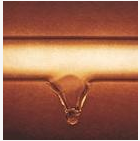Enormous deposits of helium–estimated at 54 billion cubic feet–have been discovered in Tanzania’s Rift Valley and could relieve dwindling supplies of the rare gas, which is used in hospitals in MRI scanners as well as in spacecraft, telescopes and radiation monitors. “This is seven times the current global consumption,” said Professor Chris Ballentine of Oxford University, one of the researchers working on the project. “This is enough to fill over 1.2 million medical MRI scanners.”
The discovery, described as game-changer, is set to end concerns over a shortage of gas used in medical diagnosis equipment, mainly MRI and in rocket science. Some independent analysts say the recently discovered helium gas in Lake Rukwa could be worth $3.5 billion.
As scientists in the UK and Norway on Monday revealed the discovery of a large helium gas field in Tanzania, the government said it was not aware of the precious gas.the Permanent Secretary in the Ministry of Energy and Minerals, Mr Justin Ntalikwa, told the ‘Daily News’ in an interview that the government was yet to be informed on the new discovery.
“We don’t have any information regarding the discovery of that gas; those who have announced the discovery know it all,” said the PS. Up until now, helium has been mostly found accidentally during oil and gas exploration.
Helium is formed by the slow and steady radioactive decay of terrestrial rock. However, global supplies are running low, with warnings that supplies cannot be guaranteed in the long term.
Prof Jon Gluyas, of the Department of Earth Sciences at Durham University, who collaborated on the project, said the price of helium had gone up by 500 per cent in the last 15 years.
“Helium is the second most abundant element in the Universe but it’s exceedingly rare on Earth,” Prof Gluyas was quoted by the BBC News as saying. Tanzania Petroleum Development Corporation (TPDC) Managing Director Dr James Mataragio said his organisation had no mandate to deal with helium gas.
Helium – Tanzania’s New Chemical Wealth

